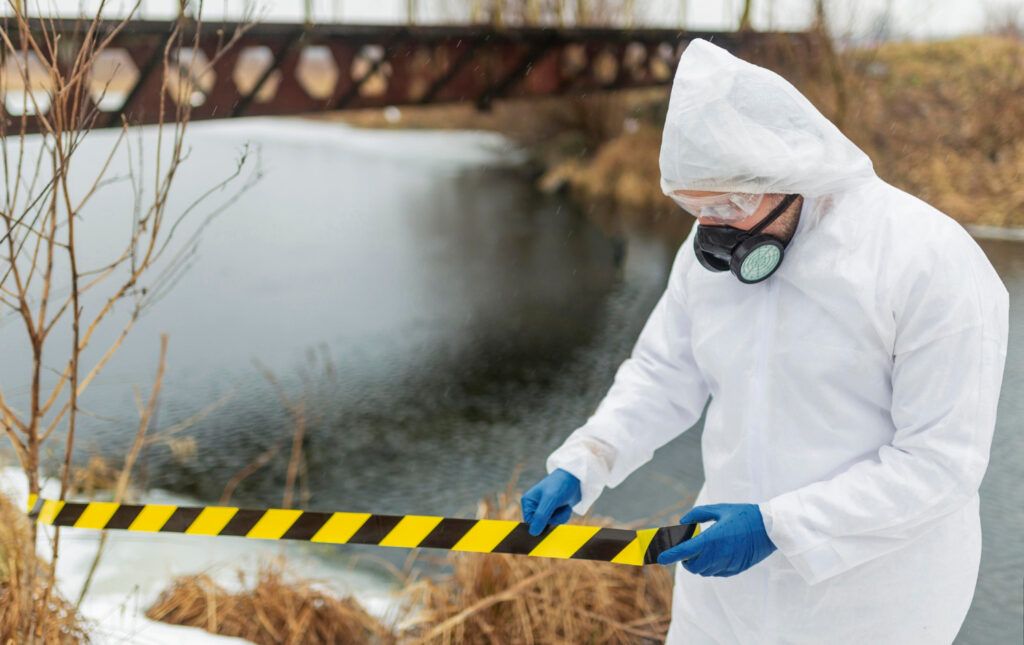Chemicals are very useful for a broad variety of functions. But, many chemicals are hazardous or sometimes even deadly when they are not used in a properly controlled manner.
Chemical spills are not rare occurrences. Accidents can still happen with secure chemical storage solutions. And so a good spill response can be vital in reducing the damage from a chemical spill.
Delayed chemical spill containment can mean bigger issues for the workplace or institution, as it increases the possible damage chemical spills can cause to humans, workplace, and the environment. Larger spills require more time and energy with resources to clean up, increasing the possible effects of a chemical spill.
You can also take advice from an environmental consultant for guidance.
Different types of spills
Each of the following requires specific responses tailored to the nature of the substance involved and the affected environment.
- Biohazard spills
These involve the release of biological materials like blood, body fluids, etc. proper containment and cleanup are essential to prevent the spread of pathogens and protect against possible health hazards.
- Chemical spills
These include the emission of dangerous substances like acid and toxic compounds. They require careful handling due to the possible risk to human health, environment, and the surrounding environments.
- Fuel spills
These encompass the release of some fluids from vehicle accidents or storage tank leaks. Fuels like diesel, gasoline, or other fuels pose fire hazards and environmental risks. This requires prompt containment and cleanup measures.
- Oil spills
These occur when petroleum products are released into the environment from sources like pipelines, tankers and all. They can face severe ecological consequences and affect marine life and coastal ecosystems.
- Radioactive spills
These involve the release of radioactive materials from industrial facilities, medical institutes, or nuclear accidents. They require specialized equipment and procedures to reduce exposure and containment risks.
- Solid waste spills
The solid waste materials like construction debris, hazardous waste containers, or landfill leachate can occur during transportation or handling. They involve immediate isolation to prevent further spread and environmental containment.
Effects of spills
Spills can have various effects, including;
1. Environmental damage
Any type of spills can pollute water and land. This can harm plants and animals that live in or near those areas. Oil spills can also destroy habitats like wetlands and oyster reefs.
2. Health effects
Spills can contaminate food and drinking water, harming human health. Oil spills can cause health problems in animals like internal organ damage, reproduction problems, etc.
3. Economic impact
Spills can harm local economies by forcing the closure of businesses, driving away tourists, and restricting access to waterways.
For instance, fishing restrictions can cause economic hardship for fishermen and the surrounding communities.
4. Social impacts
Spills can cause social problems in affected areas like psychological effects on fishermen.
Steps of spill response
The following brief look at the seven step process of a spill response outlines the important problem solving steps.
1. Assess the risk of the spill
A professional needs to assess the spill as soon as it occurs. The professional should have an intimate working knowledge of the spilled material and understand the area of the spill.
Some companies appoint certain employees to act as assessment professionals as they know the area, materials, and personnel. Whoever is in charge must perform the assessment fast and thoroughly.
2. Choose the proper personal protective equipment
Someone else may take over selecting personal protective equipment (PPE) depending on company policy and professional spill responders. The one who sees this step must learn about the spill assessment and risks to determine what PPE everyone should wear.
They can take advice from available PPE literature and authorities. Only spill responders may have to wear PPE depending on the risk of the spill. Professional spill responders arrive in their own PPE based on their knowledge of the situation.
3. Stop the spill source
If the spill is small and easy to stop the spill source safely, then it is best to stop the source before confining the spill. A large spill can make it difficult to stop the source, it is best to enclose the spill first.
4. Confine the spill soon
Quick confinement is crucial to protect people, property and the overall environment. Different adsorbents can help contain different materials. You can use physical barriers also to confine the spills. Whatever you use, it is crucial to protect the water.
Someone must alert the authorities and increase the spill cleanup if the spill contaminates local water.
5. Make a clean-up action plan
After stopping the spill source and confinement, the responders can start cleaning it up. They need an action plan for this step to properly clean the affected area.
6. Decontaminate the site, personnel and equipment
Build a decontaminate site so people and equipment can safely leave the place without spreading hazardous material.
7. Complete spill reports
It is the step to do. Responders must complete the proper spill reports about the incident. It may require various types of paperwork following the spill.
Conclusion
Know about the spill response properly and maintain the steps when needed. Ask for help from an environment consultant if needed and help secure the environment.
Visit our home-page for more information

